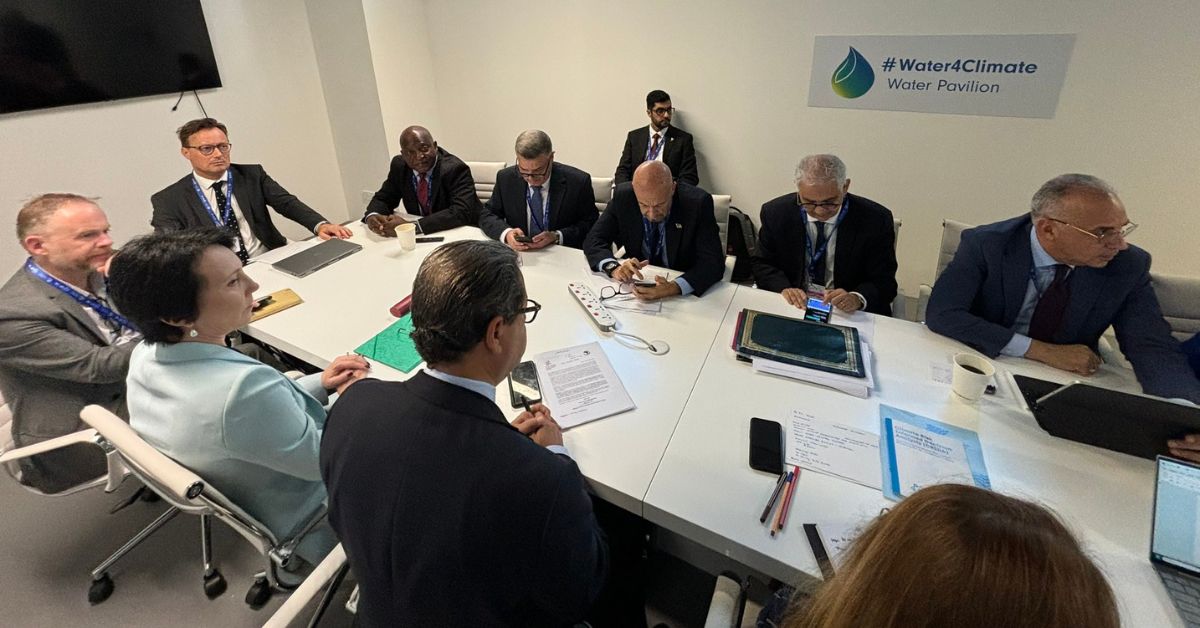DUBAI, UAE — Physical risks from climate change are rising globally, and GCC countries could become more vulnerable to their economic and financial impacts over the next few decades if investments in adaptation and resilience stagnate.
According to a new S&P Global report titled ‘Sustainability Insights Research: Lost GDP: Potential Impacts of Physical Climate Risks,’ the GCC region’s GDP could be at risk per year by 2050—slightly more than the amount at risk in 2020—due primarily to extreme heat and water stress.
The GCC’s economic geography is relatively concentrated, making it vulnerable to water stress, extreme heat, and flooding after heavy rains. This is because most of the GDP is generated in cities, hydrocarbon-producing facilities, or import/export free zones. In some cases, adaptation and resilience measures can help soften or avoid impacts. According to S&P, the majority of GCC sovereigns have significant resources to continue their efforts in this area.
The GCC’s main climate hazards are water stress and extreme heat.
Water stress and extreme heat events are not uncommon in the GCC. Generally, higher temperatures increase energy requirements for cooling, while exacerbating water stress. There’s also a risk of potential damage from pluvial flooding, which occurs during heavy rainfall.
At A Glance Rising Climate Risks for GCC: Global climate change poses increasing physical risks, potentially impacting GCC economies and finances if adaptation efforts lag. GDP Threatened by Climate Factors: S&P Global report warns of GCC's GDP risks by 2050, driven by extreme heat and water stress. Vulnerability of Concentrated Economies: GCC's economic concentration in urban areas and key industries heightens susceptibility to water stress, heat, and rain-induced flooding. Increasing Temperatures and Energy Demands: GCC experiencing rising temperatures and energy needs for cooling, exacerbating water stress and risk of pluvial flooding. High Water Stress Ratios: GCC faces one of the world's highest water stress ratios, doubling World Resources Institute's high-stress threshold, challenging sustainable growth. Climate Hazards and Global Economic Impact: By 2050, global warming beyond 2°C could see significant GDP losses worldwide, with GCC particularly at risk. Adaptation and Resilience Measures in Place: GCC countries are implementing measures to combat climate risks, though these can increase greenhouse gas emissions. GCC's Desalination Capacity and Future Needs: Holding a major share of global desalination capacity, the GCC faces challenges in meeting future water demands sustainably. Financial Resources for Climate Adaptation: GCC governments possess substantial financial resources to invest in costly adaptation and resilience measures, including infrastructure retrofitting. Net-Zero Commitments and Economic Diversification: GCC countries are incorporating net-zero targets and renewable energy investments into their national economic plans, aiming to reduce hydrocarbon dependency. Impact on Sovereign Credit Ratings: Climate risk changes may influence GCC sovereign credit ratings, affecting economic, external, and fiscal assessments.
The region is slowly heating up: As a proxy for changing exposure to extreme heat, S&P Global Sustainable1’s Physical Risk dataset uses the frequency that the 95th percentile of the baseline daily maximum temperature is exceeded annually. The average annual 95th percentile temperature in the GCC is 108 degrees Fahrenheit (42°C), ranging from 100 degrees in Oman to 113 degrees in Kuwait. This was exceeded on average for the equivalent of two months in 2020.
In 2050, the temperature is projected to exceed this threshold for three and a half months per year under a slow transition scenario (SSP3-7.0), absent adaptation. Alongside generally higher temperatures, additional extreme heat events will likely accelerate physical asset degradation and even capital loss rates.
Economies may find it challenging to keep up with the increasing demand for water: Water stress occurs when total water withdrawals within an area exceed the available surface and groundwater resources. As the region’s populations expand, the climate warms, and economies develop, water demand will increase.
The region’s water stress ratios (projected water withdrawals to total renewable water supply in a given area) are among the highest globally. They are already more than double the 0.4 threshold for high water stress set by the World Resources Institute, according to the Lost GDP report. At the same time, greenhouse gas emissions related to energy-intensive water production could build, without substantial development of power generation from renewable sources.
High surface water runoff in arid and urban areas can lead to flooding, even during moderate rainfall: Most of the GCC’s climate is hot desert or dry land, with limited vegetation to absorb rainfall and moisture. These factors expose the region’s main economic centers to pluvial flood risk. A higher incidence of extreme heat could compound pluvial flood risk, increasing the amount of surface water runoff and precipitation volumes by 2050—absent adaptation—according to S&P analysis.
Climate hazards add to global economic risks: The Lost GDP report found that, by 2050, if global warming does not stay well below 2°C (35.6°F), up to 4.4 percent of the world’s GDP could be lost annually, absent adaptation. This is at least one-third greater than in the Paris Agreement’s scenario—consistent with Shared Socioeconomic Pathway 1-2.6 (SSP1-2.6)—in which 3.2 percent of global GDP may be at risk annually, according to the report. GDP at risk rises to 5.1 percent under a limited mitigation scenario, where emissions are high.

Some adaptation and resilience measures are already in place.
With limited groundwater resources and some of the highest average daily temperatures globally, extreme heat and water stress are already commonplace in the GCC. As a result, decision-makers throughout the region have—to differing extents—embedded adaptation and resilience measures into their countries’ infrastructure.
These measures may help reduce the potential impacts of physical climate risks. Yet, they may also contribute to increased greenhouse gas emissions, particularly where additional energy is required, such as for desalination and cooling.
Water stress and extreme heat are the GCC’s main climate risks: The GCC is estimated to hold 44 percent of the world’s total desalinated water production capacity, according to a 2022 World Bank report (Jägerskog and Barghouti). Estimates vary on the extent to which the region’s desalination capacity will meet its future water needs. Moreover, regional policymakers recognize that continued investment in resilience measures is a prerequisite for sustainable economic development.
The region has the financial resources to implement adaptation and resilience measures: GCC governments have some of the highest assets-to-GDP ratios among the countries we rate. Consequently, they have significant financial means to invest in adaptation and resilience measures—including retrofitting—which can be extremely expensive, especially when coupled with large national diversification plans.
Policymakers in the region have included net-zero commitments in national economic diversification plans to varying degrees: They are planning for the energy transition and therefore implementing sustainable steps to reduce the region’s overall economic and revenue dependence on hydrocarbons. We expect investments in renewables to generate electricity and to increase water production capacity will continue to expand across the region.
What this means for GCC Sovereign Credit Ratings
According to S&P, changes affecting climate risk can influence sovereign ratings and outlooks and may directly affect three of the pillars of our analysis, namely the economic, external, and fiscal assessments, and indirectly affect other credit rating factors.







